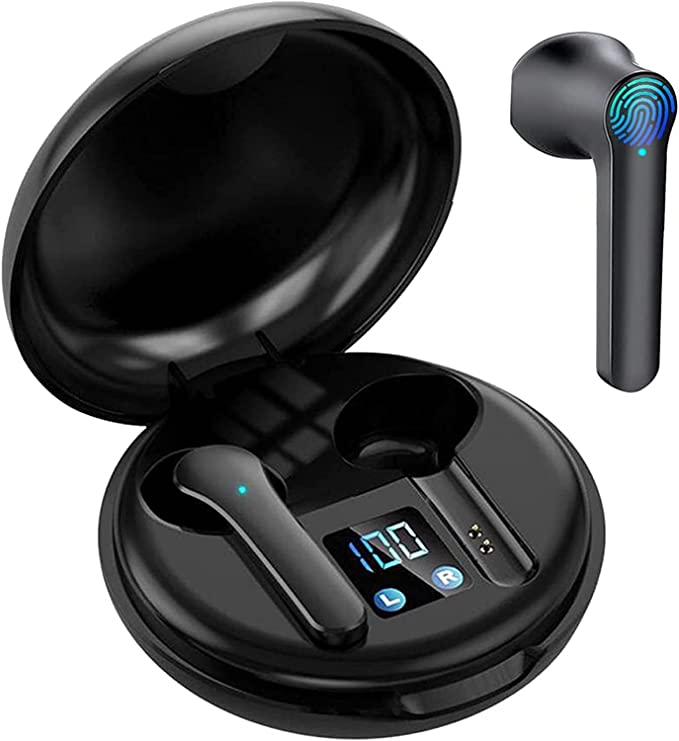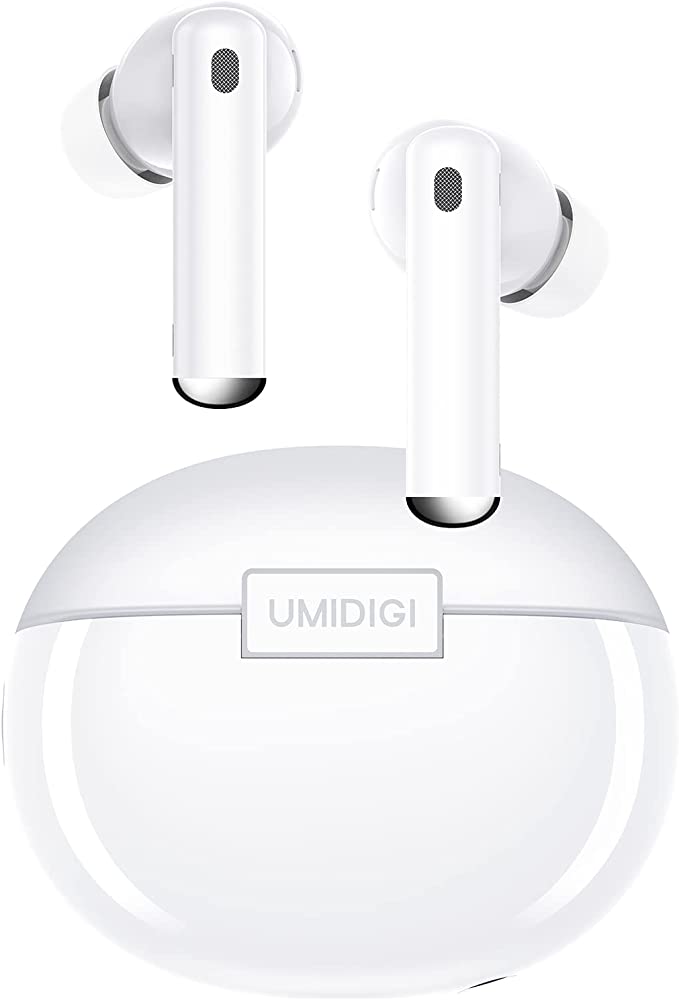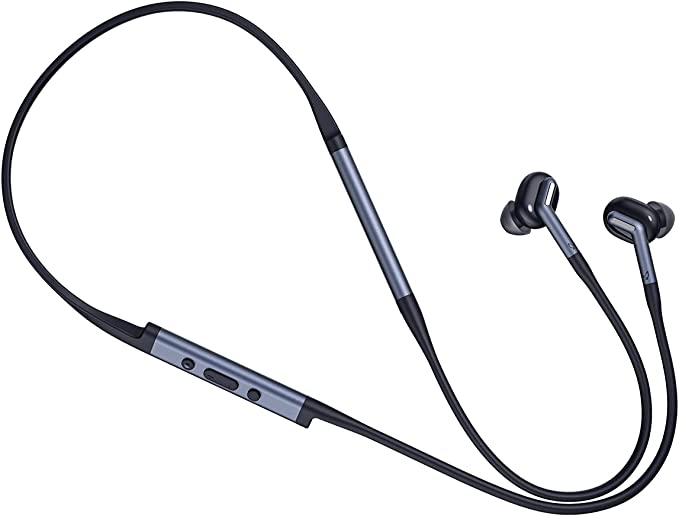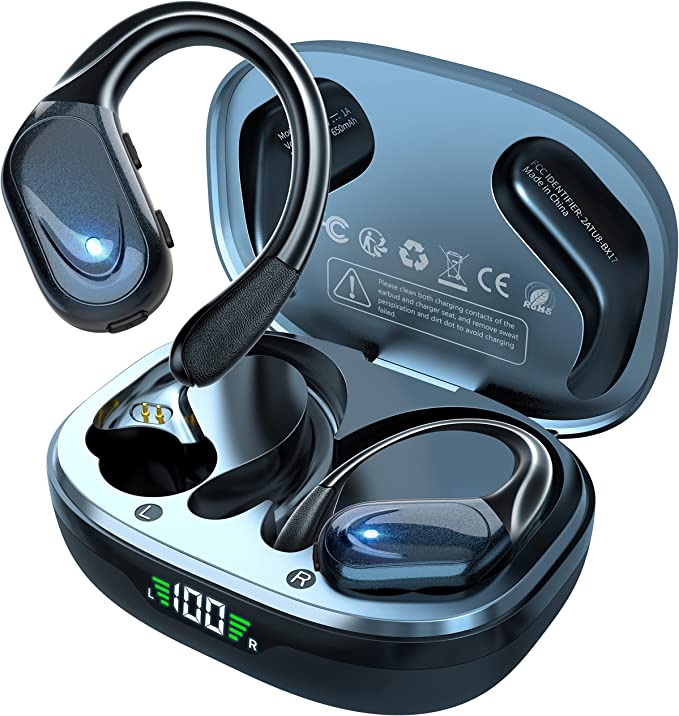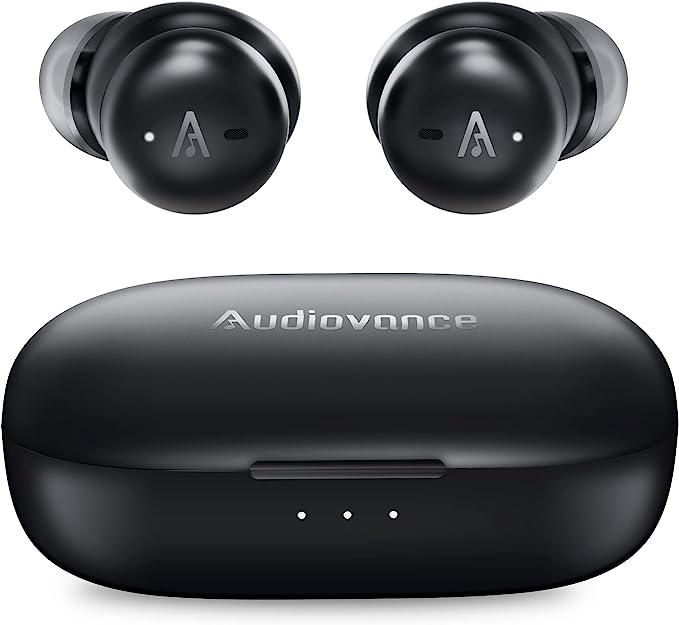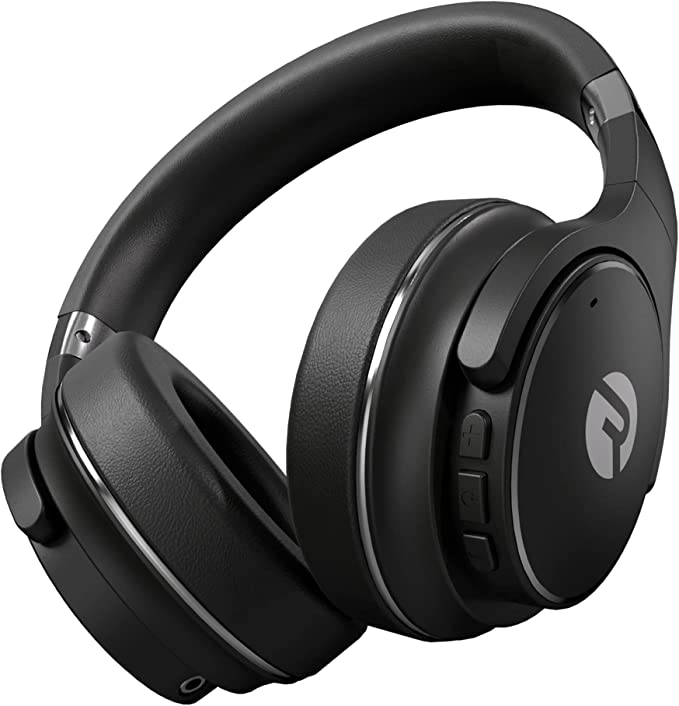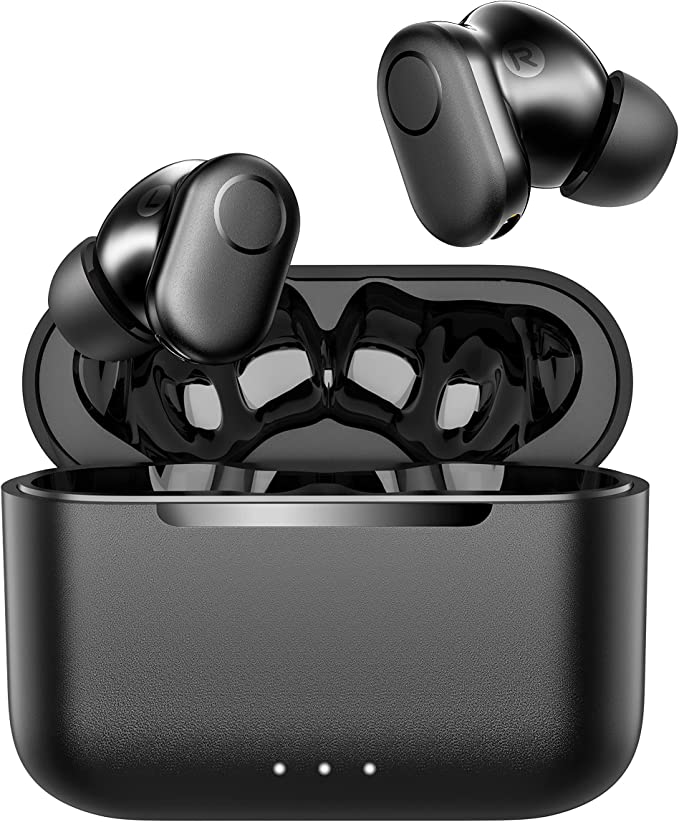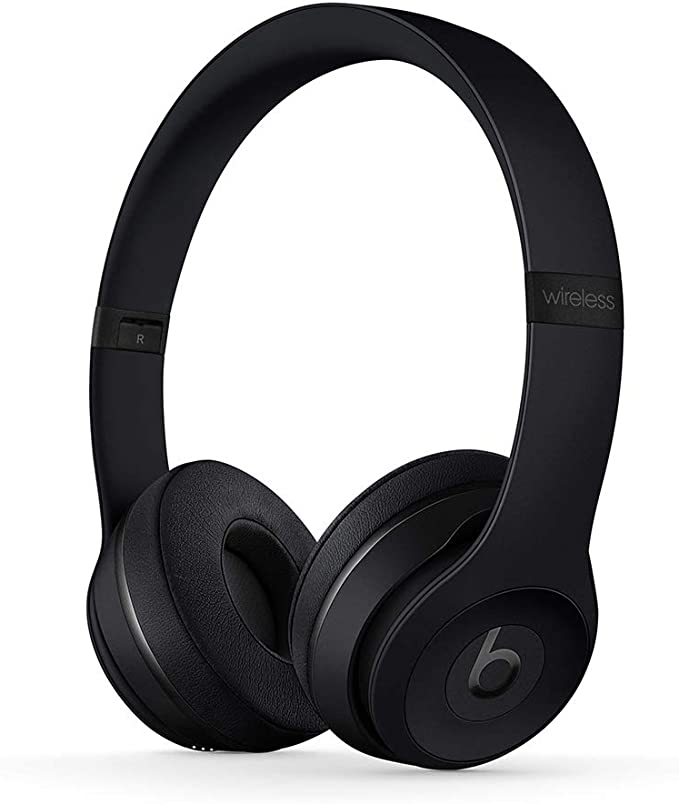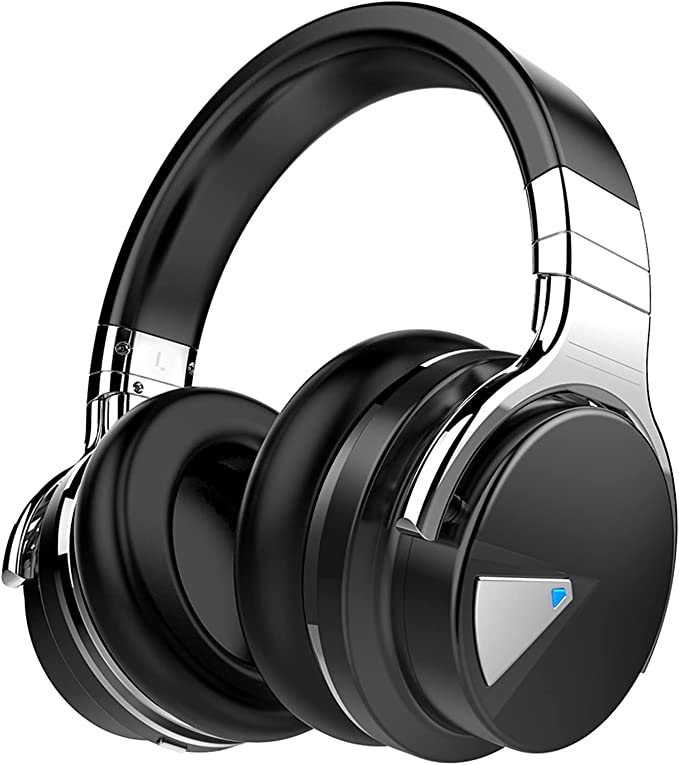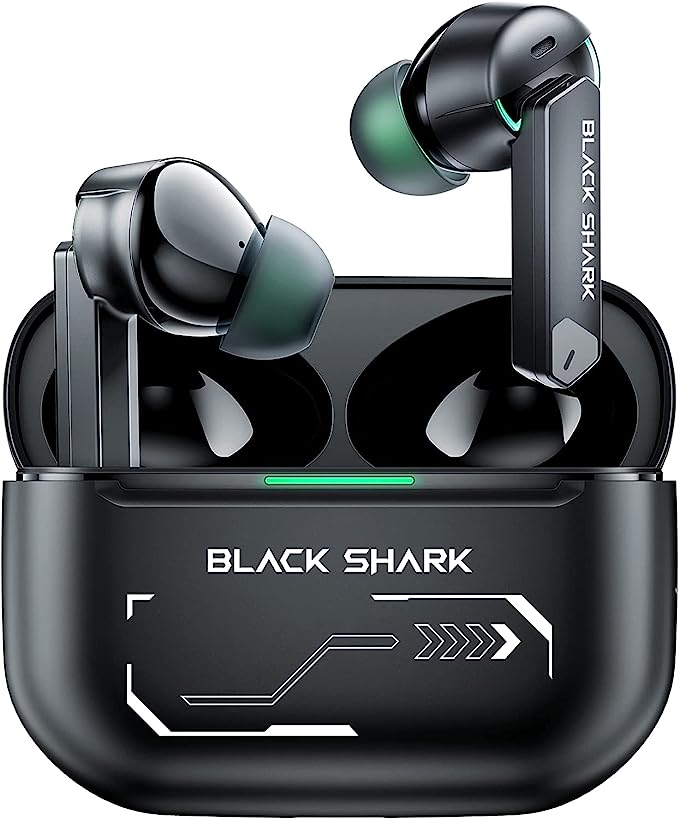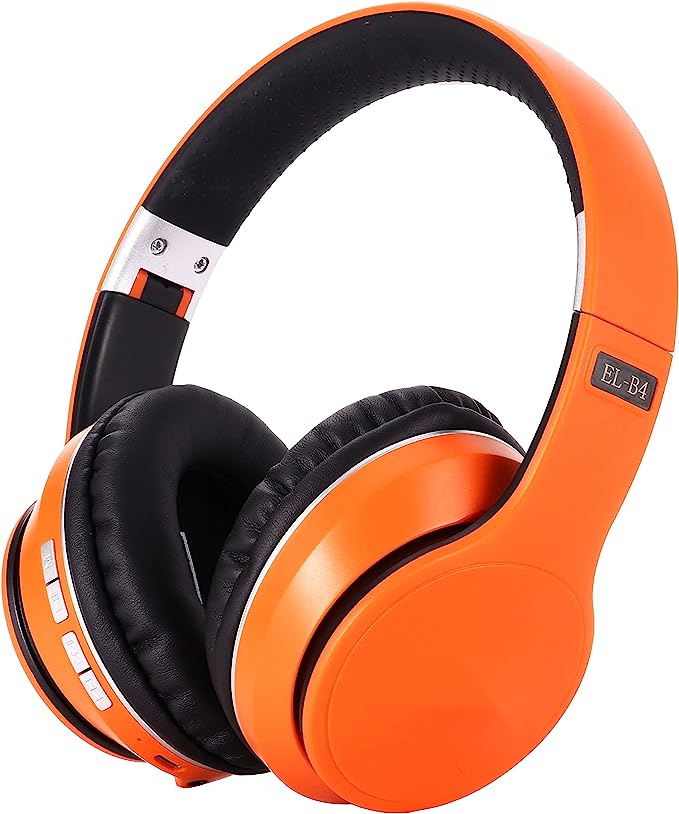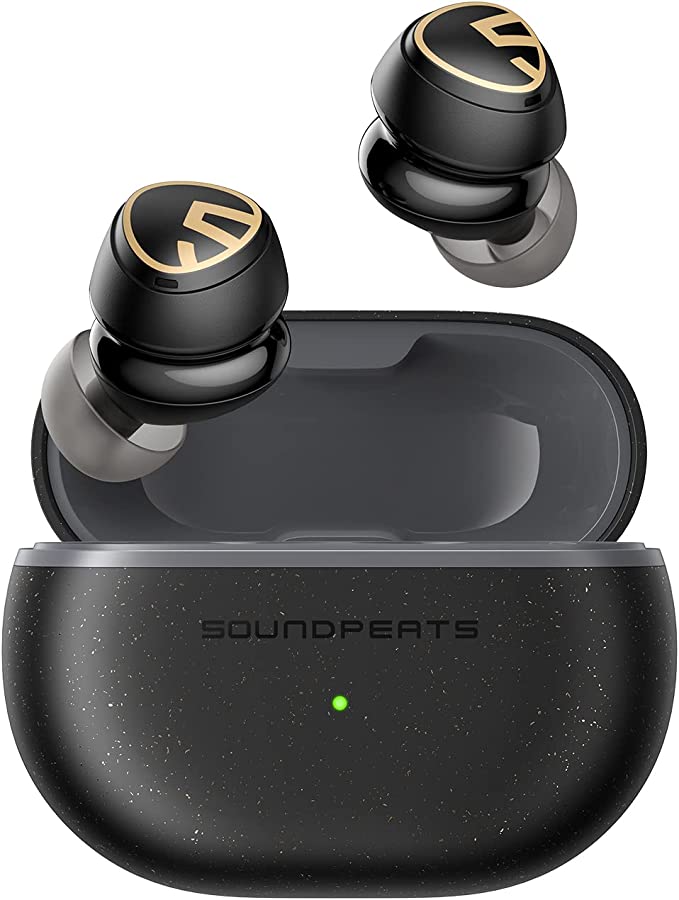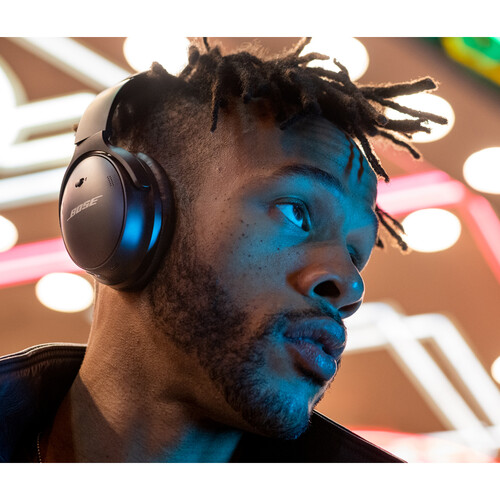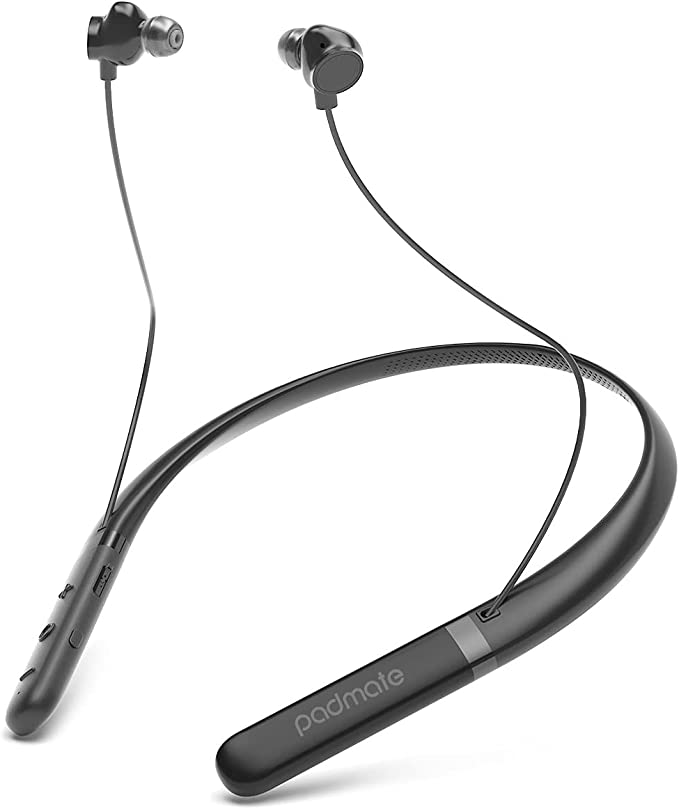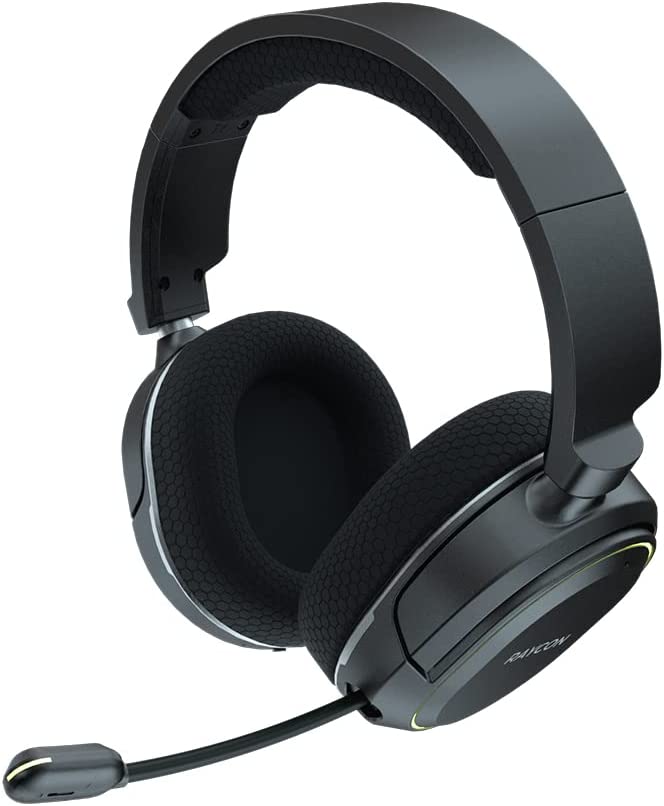HROEENOI JZ02 Active Noise Cancelling Wireless Headphones: The Science of Serenity in a Noisy World
Update on May 19, 2025, 5:54 p.m.
We live in a world saturated with sound. From the insistent hum of urban life and the digital chatter of our devices to the subtle chorus of nature, our ears are constantly navigating a complex acoustic landscape. In this ever-present symphony (and sometimes cacophony), there’s a profound human yearning: a desire for focus amidst distraction, for immersion in a chosen melody, for a pocket of personal tranquility. It’s a quest to curate our own auditory space. Thankfully, modern technology, as exemplified by devices like the HROEENOI JZ02 Active Noise Cancelling Wireless Headphones, offers us increasingly sophisticated keys to unlock and shape this personal soundscape. While we’ll use the listed features of these particular headphones as our framework for exploration, the scientific principles we’ll delve into are universal, painting a broader picture of how innovation is fine-tuning our relationship with what we hear—and what we don’t.

The Alchemy of Quiet: Unraveling Active Noise Cancellation
Imagine the persistent drone of an airplane engine, the low thrum of office air conditioning, or the rhythmic rumble of a commuter train. These monotonous, low-frequency sounds are notorious for their ability to fatigue and distract. For decades, the primary defense was passive: thicker materials, earplugs. But what if we could fight sound with sound? This is the elegant premise of Active Noise Cancellation (ANC).
The idea isn’t brand new; in fact, its theoretical underpinnings stretch back nearly a century. German physicist Paul Lueg filed a patent in 1933 describing the concept of nullifying sound by introducing an “anti-sound” of opposite phase. Picture this: sound travels in waves, with peaks and troughs. If you can generate an identical wave where the original’s peak meets a new trough, and vice-versa, they cancel each other out. Destructive interference, as it’s known in physics. Lueg’s vision was ahead of its time, as the electronics required were cumbersome and slow.
It wasn’t until the late 1970s that the technology truly began its practical journey, largely thanks to Dr. Amar Bose. Legend has it that during a noisy international flight in 1978, frustrated by how engine noise degraded his music listening experience, he sketched out the fundamental mathematics for a noise-cancelling headset right there on an airline napkin. His company, Bose Corporation, would go on to supply specialized ANC headsets to pilots, protecting their hearing and improving communication clarity, before the technology eventually trickled down to consumer audio.
So, how does this acoustic wizardry actually work in a modern device, say, like the HROEENOI JZ02?
1. Listening In: Tiny microphones are strategically placed on the outside of the earcups. These are constantly sampling the ambient environmental noise.
2. Digital Deliberation: The captured sound is fed to an internal digital signal processing (DSP) chip. This chip analyzes the incoming sound wave in real-time, determining its frequency and amplitude.
3. Crafting the “Anti-Noise”: The DSP then generates a new sound wave that is precisely 180 degrees out of phase with the unwanted noise – its acoustic mirror image.
4. The Cancelling Chorus: This anti-noise wave is played through the headphone’s internal speakers, mixing with the original ambient sound before it reaches your eardrum.
Think of it as a kind of acoustic karate – deftly using the characteristics of the incoming “attack” (the noise) to neutralize it. The result is a dramatic reduction in those persistent, droning sounds. This isn’t just about achieving silence; it’s about creating a cleaner canvas for your desired audio. Music sounds clearer and more detailed at lower volumes, podcasts become more intelligible, and importantly, listening fatigue is significantly reduced. For the frequent flyer, the HROEENOI JZ02 aims to transform a noisy cabin into a haven of calm. For the remote worker in a bustling household, it promises a much-needed bubble of concentration.

The Gentle Bastion: Memory Foam, Passive Isolation, and the Science of Comfort
While ANC is a marvel of active electronics, the physical design and materials of headphones play an equally crucial, if sometimes unsung, role in shaping our auditory world. This is where passive noise isolation and long-term comfort come into play, and a material like memory foam, as featured in the HROEENOI JZ02’s ear cups, truly shines.
Interestingly, memory foam, or viscoelastic polyurethane foam, wasn’t born in an audio lab. It was developed in the 1960s under a contract by NASA’s Ames Research Center to improve seat cushioning and crash protection for airline pilots and passengers. The goal was a material that could distribute pressure evenly and absorb impact. This “slow spring-back foam,” as it was initially called, had the unique property of conforming to an individual’s shape in response to heat and pressure, then slowly returning to its original form once the pressure was removed.
What makes it so special for headphones? * The Science of “Slow Spring-Back”: Viscoelasticity means the foam exhibits both viscous (fluid-like) and elastic (spring-like) characteristics. When you press it, it doesn’t just bounce back immediately; it yields and then gradually recovers. This allows it to mold intimately to the contours around your ears. * Personalized Seal: This close conformity creates an excellent acoustic seal. This seal acts as a physical barrier, effectively blocking out a good portion of ambient sound, particularly higher-frequency sounds like chattering voices or the clatter of keyboards. This is passive noise isolation – it works without any power. * Pressure Point Relief: By distributing the clamping force of the headphones evenly, memory foam significantly reduces pressure on the sensitive areas around the ears. This is key for long-wearing comfort, allowing you to stay immersed for hours without that tell-tale ache.
In headphones like the HROEENOI JZ02, memory foam earcups and an over-ear design work in beautiful synergy. The over-ear form factor itself provides a degree of isolation, and the memory foam perfects that seal while ensuring comfort. This robust passive isolation is the perfect partner to Active Noise Cancellation. By physically blocking a range of sounds, it reduces the workload on the ANC system, allowing it to focus more effectively on the remaining, typically lower-frequency, noises. For students immersed in late-night study sessions or audiophiles lost in an album for hours, this combination means an undisturbed and comfortable listening sanctuary.
Cutting the Cord: Wireless Freedom and the Whispers of Bluetooth
There was a time, not so long ago, when enjoying high-quality audio on the go meant being physically tethered to your device by a cable. This “age of entanglement” had its frustrations: snagged wires, tangled messes, and restricted movement. The dream of true wireless freedom in personal audio took a while to materialize effectively, but today, technologies like Bluetooth have made it ubiquitous, a key feature for headphones like the HROEENOI JZ02.
The name “Bluetooth” itself has a charming origin, harking back to Harald “Bluetooth” Gormsson, a 10th-century Danish king famed for uniting disparate Danish tribes into a single kingdom. The tech’s founders saw a parallel: Bluetooth technology was intended to unite different devices and industries with a single short-range wireless standard. Developed in the 1990s by Ericsson, and later standardized by the Bluetooth Special Interest Group (SIG), it uses short-wavelength UHF radio waves in the ISM band (Industrial, Scientific, and Medical) from 2.400 to 2.485 GHz.
At its core, wireless audio transmission involves:
1. Encoding: The audio signal from your source device (phone, laptop) is digitally encoded.
2. Transmission: This digital data is transmitted via radio waves from the source device’s Bluetooth antenna to the headphones’ antenna.
3. Reception & Decoding: The headphones receive these radio waves and a specialized chip decodes the digital data back into an analog audio signal.
4. Playback: This analog signal then drives the headphone speakers.
An important, though often invisible, part of this process is the audio codec (coder-decoder). This is an algorithm that compresses and decompresses the digital audio data. The most basic codec, SBC (Low Complexity Subband Codec), is mandatory for all A2DP (Advanced Audio Distribution Profile) stereo Bluetooth headphones. While SBC gets the job done, other codecs like AAC (Advanced Audio Coding, favored by Apple) or various forms of aptX (developed by Qualcomm) can offer different trade-offs in terms of audio fidelity, latency (delay), and power consumption. The specific codecs supported by a device like the HROEENOI JZ02 would influence these aspects of the wireless listening experience, but the fundamental benefit remains: the liberation from wires. For the fitness enthusiast at the gym, this means unrestricted movement. For the commuter navigating a crowded space, it means one less thing to get snagged.
The Unseen Marathoner: Battery Life, Quick Recharges, and the Power Within
All this sophisticated onboard technology – the ANC processing, the wireless radio, the amplification – needs power. The Achilles’ heel of many early portable electronic devices was their limited battery life, leading to the universal modern woe of “low battery anxiety.” The HROEENOI JZ02, however, lists an impressive 40-hour playtime, a testament to significant advancements in battery technology and power management.
The star player here is the lithium-ion (Li-ion) battery. Compared to older rechargeable battery chemistries like nickel-cadmium (NiCd) or nickel-metal hydride (NiMH), Li-ion batteries offer a much higher energy density – meaning they can store more energy in a smaller, lighter package. They also suffer less from the “memory effect” that plagued older batteries. Continuous improvements in Li-ion cell chemistry, internal construction, and the efficiency of the electronic components within the headphones all contribute to such extended playtimes. Forty hours could mean a full work week of listening, multiple long-haul flights, or many gym sessions on a single charge.
Complementing this endurance is the convenience of Quick Charge capabilities. When you’re short on time, the last thing you want is a lengthy recharge. Quick charging technologies allow a battery to be replenished much faster, especially in the initial part of the charging cycle. This typically involves sophisticated battery management systems (BMS) within the device and charger that can intelligently negotiate higher currents or voltages for a period, without compromising the battery’s long-term health. While the specifics (e.g., “X minutes of charge for Y hours of playback”) vary by product, the underlying science allows for a swift “sip of power” to provide several hours of listening, a lifesaver for the globetrotter on a tight layover or the busy professional needing a rapid power-up before heading out.

Finale: Composing Your Personal Soundscape – Where Technology Meets Experience
As we’ve journeyed through the science woven into a modern pair of headphones like the HROEENOI JZ02, it becomes clear that such a device is far more than a simple accessory. It’s a marvel of convergence, where acoustics, materials science, radio engineering, and electrochemistry intertwine. The Active Noise Cancellation doesn’t just block sound; it sculpts silence. The memory foam earcups don’t just cushion; they create a personalized bastion of comfort and passive isolation. The wireless connection doesn’t just transmit audio; it grants freedom. And the long-lasting battery doesn’t just store energy; it ensures your soundtrack can keep pace with your life.
Ultimately, these technologies are not merely about specifications on a data sheet. They are enablers, tools that empower us to curate our auditory environment, to find focus in the clamor, to lose ourselves in the richness of music, or to simply enjoy a moment of profound, uninterrupted peace. As we look to the future, we can anticipate even more intelligent and adaptive audio technologies – perhaps AI that learns our listening preferences and dynamically adjusts our soundscape, or bio-sensors that modulate audio for well-being.
But even today, there’s a quiet satisfaction in understanding the intricate science at play in the devices we use daily. It allows us to appreciate not just the “what,” but the “how” and “why” – and in doing so, to more fully harness the remarkable ways technology can enhance our human experience, one carefully managed sound wave at a time.
